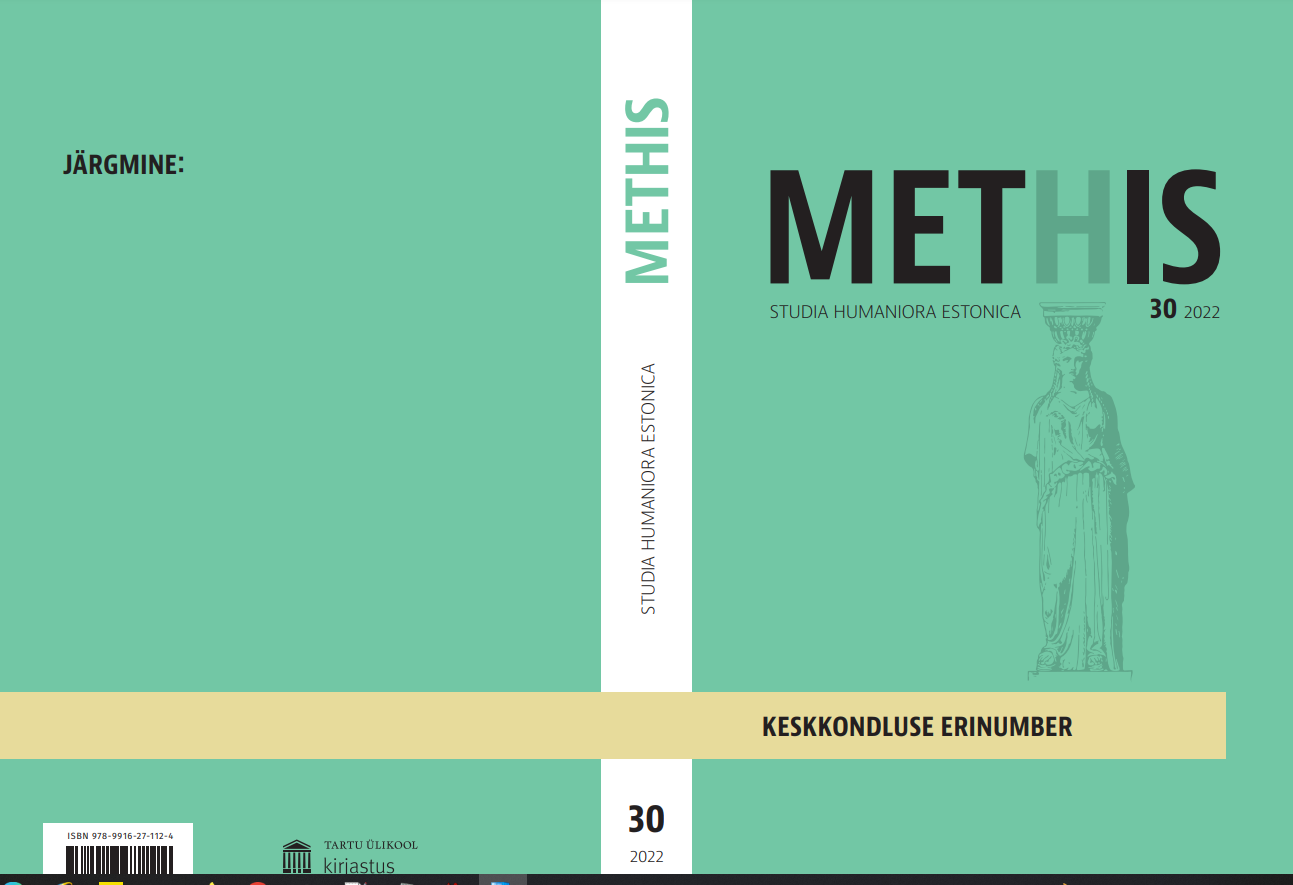Stanislavski süsteem kui draamatõlkija töövahend / Stanislavsky System as a Tool for a Drama Translator
DOI:
https://doi.org/10.7592/methis.v24i30.22113Keywords:
draamatõlge, Stanislavski süsteem, interlingvistiline tõlge, intersemiootiline tõlge, drama translation, Stanislavsky system, interlingual translation, intersemiotic translationAbstract
Tõlkija seisab oma töös silmitsi paljude probleemidega. Tekstilise ja kultuurilise tasandi probleemide lahendamiseks õpetatakse tõlkijale mitmesuguseid võtteid, kuid subjektiivsemate aspektide puhul, näiteks rääkija kõnemaneerile sobivama vaste leidmisel või karakteri eripära ja meeleolu edasiandmisel kõne kaudu tuleb loota rohkem tunnetusele. Artiklis on fookuses võimalike probleemide, eeskätt tunnetuslike küsimuste lahendamine draamatõlkija töös. Autor kõrvutab draamatõlkija ja näitleja tööd ning pakub võrdleva analüüsi kaudu välja võimaluse, kuidas draamatõlkija saaks tekstile läheneda samamoodi nagu näitleja, ja selgitab, mida see lavastustervikule juurde annaks.
Summary
This article argues that the Stanislavsky system can be applied in approaching plays to be translated.
The first part of the article is focused on mapping the intersemiotic system of a stage production in order to determine the position of an interlingual translation in it. Even though several theatre researchers have attempted to categorise the various sign systems of a stage production, no single and universally approved categorisation exists yet. Even though such an attempt of categorisation can also be attributed to a number of drama translation scholars and practitioners, drama translation can rarely be found as a separate sign system.
The second part of the article is focused on illustrating the extent to which a drama translator can contribute to the creation of a stage production. It includes examples from renowned drama translators, showing the different levels on which the awareness of a drama translator can make a difference. It also raises the question of whether drama translators could have a more systematic approach at their disposal when translating plays.
The third part of the article gives a short overview of the staging process according to the Stanislavsky system. Konstantin Stanislavsky (1863–1938) was a Russian actor and stage director who is most famous for creating a system of acting and actor training. His system is currently applied in most of Western theatre and is the primary basis for actor training in Estonia. A large part of the system comprises a method for approaching and analysing a play.
The fourth part of the article is focused on comparing the specifics of the works of an actor and a (drama) translator to determine the comparable parts of both professions. Even though the specifics of the work of an actor and a translation seem to have nothing in common, there is a significant similarity in the way of approaching a play text. Both an actor and a translator should thoroughly analyse the source text to find an optimal way of translating it into a new sign system: an interlingual translation in the case of a translator and an intersemiotic translation in the case of an actor.


